Delinquencies on credit products and loans are increasing in the Maritimes, more so than in the rest of Canada, and are approaching pre-pandemic levels according to a new report from TransUnion.
In their Q4 2022 Credit Industry Insights Report, the credit reporting agency found the rate of 90-day delinquencies on all product loans is up 19.01 percent in New Brunswick, 20.36 percent in PEI and 21.3 percent in Nova Scotia, year over year. Canada as a whole is up only 10.88 percent for the same time period. And all provinces, with the exception of British Columbia, are trending towards more 90-day or longer delinquencies on their debts.
Matthew Fabian, TransUnion’s director of research and industry insights, says many factors can contribute to falling behind on debt payments including unemployment, but there are two other factors at play that are having a big impact in 2022 heading into 2023.
“In the Atlantic provinces it’s going to be the combination of interest rates and inflation,” he says. “Wage growth hasn’t really kept up to inflation.”
Fabian notes that the bulk of the inflation seen in recent months is in non-discretionary categories, food, gas, shelter, heat – things that people really can’t cut without a significant amount of pain.
Consumers are stuck with a fixed amount of money to handle all these increased costs due to inflation, and sometimes they take on more debt to help them bridge the gap between their expenses and their income. And that’s where they get burned by the increasingly high-interest rates.
“Anybody that has a line of credit or a variable rate mortgage, is going to start to see their payments go up. And in some cases, for variable rate mortgages, they hit what’s called their trigger rate where … their minimum payment goes up because it’s not even covering the principal. They’re kind of getting hit on both sides at the cost of living is going up.”
Fabian says the effect is a phenomenon called “payment shock”.
Since the beginning of March both TD, CIBC and BMO have come out with statistics showing significant amounts of time being added to amortization periods on variable rate mortgages, because the monthly payments on these products are not covering the interest payments, let alone addressing the principal.
That means the amount of debt is growing every month, despite payments being made on the mortgages. This is called negative amortization.
In Q1 2022, 45 percent of CIBC’s remaining amortizations were 20-25 years long, and 27 percent of the mortgages had 25-30 years to clear. There were no amortization periods longer than 30 years.
In Q1 2023, 31 percent of mortgages were 20-25 years, 17 percent were 25-30, 3 percent were 30-35 and a whopping 27 percent were 35 years or more.
TD’s statistics were similar.
In Q1 of 2022, the bank had 0.3 percent of its residential mortgages with amortizations of longer than 30 years.
In Q1 of 2023, 1.9 percent of the bank’s mortgages are between 30-35 years and 27.4 percent are 35 years or more.
BMO also saw no amortizations over 30 years in Q1 of 2022 but is reporting 32.4 percent are 30 years or more in Q1 2023.
Increased interest rates on mortgages have also taken away a tool for insolvency counsellors to help their clients avoid bankruptcy – debt consolidation.
“Obviously, the primary reason you take a mortgage is to have a home,” says Fabian. “But in certain cases, you might choose to take out a new mortgage earlier or differently, because you’re refinancing or maybe you’re consolidating debt.”
“Less and less people are doing that right now because it doesn’t make sense. The only reason you do that is if interest rates are low.”
He provides the example of having $30,000 in credit card debt at a 19 percent interest rate and choosing to “roll” that debt into a new mortgage and only pay 2 percent.
“We’ve seen mortgage refinance volumes go way, way down because it’s not worth it anymore,” he says. “But that, was very common through 2016 to 2019 when rates were one and a half to 3 percent. Right now those rates are four and a half to 7 percent.”
In addition to falling behind on payments, Atlantic Canadians are also using more credit products. Credit participation was up 2.2 percent in New Brunswick, 2.4 percent in Nova Scotia and 2.8 percent in PEI at the end of 2022, from a year earlier.
But Fabian notes it’s not all bad news. During the pandemic period, many people took the opportunity to pay down their debts, not to increase them, making them better able to weather the rainy days ahead.
“We came off a period in the last couple of years where credit card balances were dropping quite significantly. Through COVID consumers were actively paying down their credit cards,” he says. “We saw balances decrease.”
“Now the balances are increasing…it kind of creates this illusion that things are going way up, but it’s going from a several-year low to back to normal.”
Alex Graham is a Reporter for Huddle Today, a content-sharing partner of Acadia Broadcasting






Comments